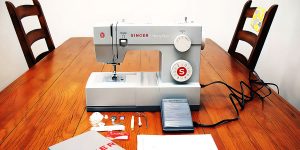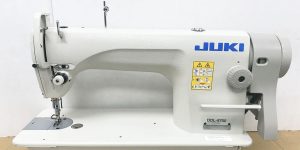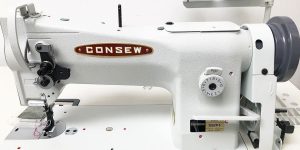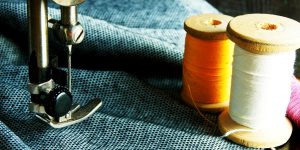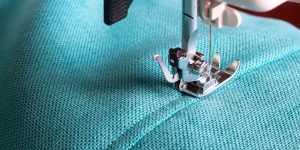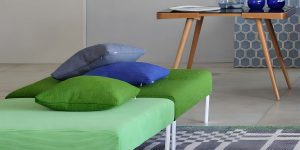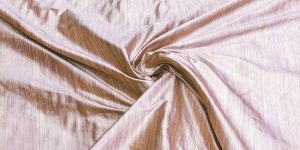In this article, I’ll take you on an exciting journey to explore the difference between cross stitch and embroidery – two fascinating techniques in the world of crafting. I’ll delve into their rich history and cultural significance, as these art forms have adorned our lives for generations. By delving into the realm of needlework masterpieces, we aim to gain a better understanding and appreciation for their unique characteristics and applications.
Understanding cross stitch
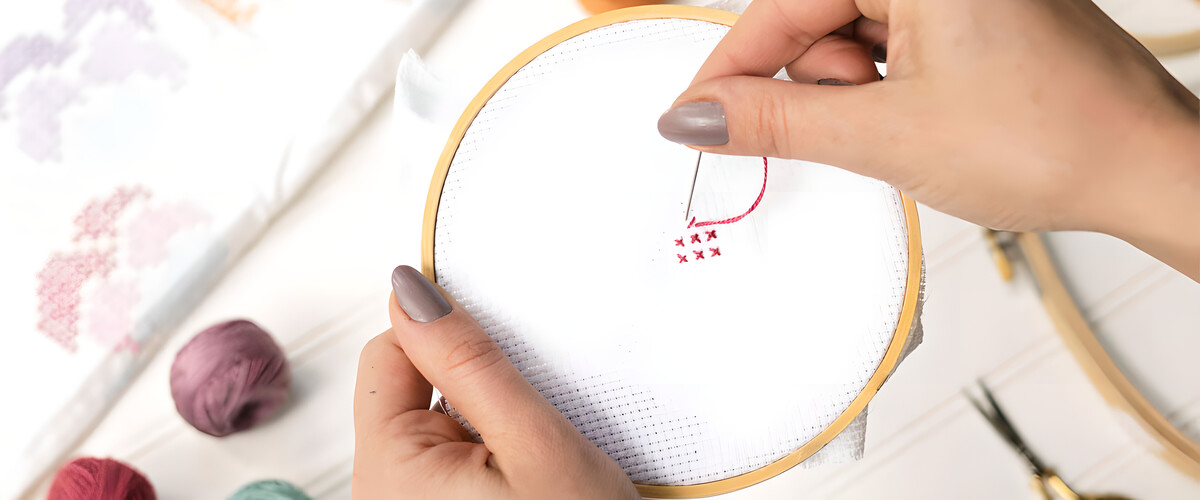
1. Definition and key features:
Cross stitch is a type of embroidery that utilizes X-shaped stitches to form a design on fabric. The stitches are typically made on an evenly spaced grid pattern, each square representing a single stitch.
2. Creating “X” stitches with a counted grid:
- Cross-stitch patterns are usually provided as charts with symbols representing different colors of floss or thread.
- Crafters follow these charts and count the number of squares to determine the placement of each stitch.
- The stitches are made by first creating a diagonal stitch from one corner of the square to the opposite corner and then completing the X shape by stitching the other diagonal.
3. Traditional and modern applications:
Traditionally, cross stitch adorned household items like samplers, tablecloths, and towels, showcasing decorative motifs and monograms.
Exploring embroidery
1. Definition and techniques:
Embroidery is a beautiful art that involves using a needle and thread to decorate fabric, bringing to life intricate patterns, delightful motifs, and enchanting designs. It encompasses an array of stitching techniques, each offering unique textures and effects.
2. Common embroidery stitches:
- Satin stitch: A smooth, glossy stitch that covers a design area with parallel threads, giving a solid and polished appearance.
- Running stitch: A simple, straight stitch that creates dashed lines and is often used for outlines or to add texture.
- Stem stitch: A rope-like stitch used for outlining and creating fluid lines, commonly seen in floral designs.
3. Versatility in fabric decoration:
- Embroidery can transform plain fabrics into captivating works of art, adding elegance and sophistication to clothing and home decor items.
- It allows for customization and personalization, making it a popular choice for monograms and special gift items.
- Embroidery is used in various cultural and traditional garments, reflecting the heritage and identity of different regions.
Tools and materials
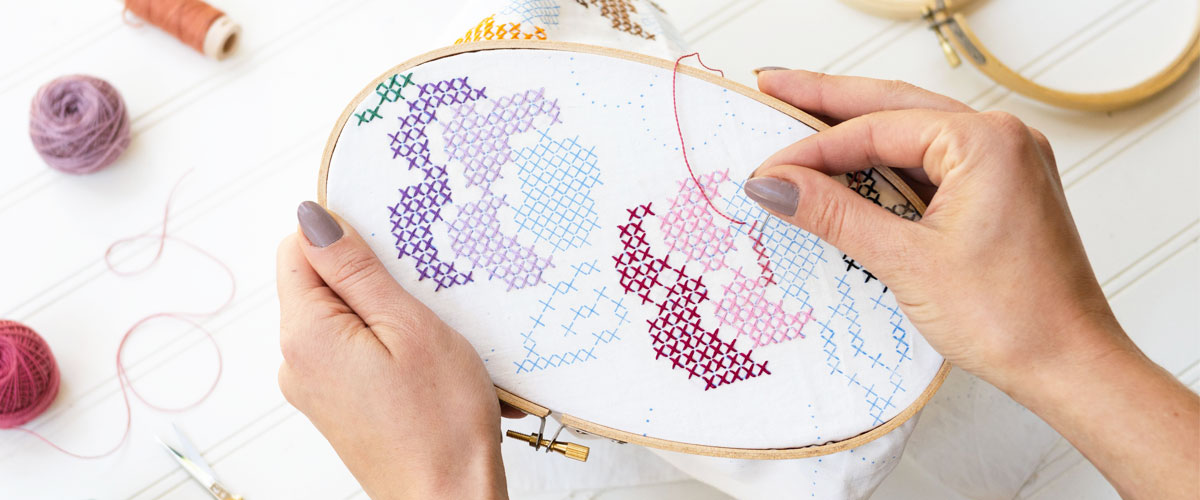
Let’s compare the tools and materials commonly used in each technique:
| Aspect | Cross stitch | Embroidery |
|---|---|---|
| Needles | Tapestry needles with a blunt tip, ideal for weaving through the fabric without splitting the threads. | Embroidery needles of various sizes allowing for different stitch thicknesses and thread types. |
| Fabrics | Aida cloth, an open-weave fabric with visible holes, making it easy to count stitches and maintain uniformity. | Various fabrics like linen, cotton, and evenweave offering different textures and densities for more intricate designs. |
| Threads/Floss | Stranded cotton floss, typically made of six strands that can be separated to achieve different thicknesses. | Embroidery floss, available in a wide range of fibers, such as cotton, silk, and metallic, allowing for diverse textures and effects. |
| Hoops/Frames | Cross-stitch frames or hoops that keep the fabric taut during stitching, helping maintain consistent tension and preventing wrinkles. | Embroidery hoops in different sizes, used to stretch and hold the fabric firmly while stitching to avoid puckering and distortion. |
| Patterns/Charts | Cross-stitch patterns are usually presented as grids with symbols representing colors, making it easier to follow and count stitches. | Embroidery patterns may come in various forms, including printed designs on fabric or paper, or digital formats. Some may require freehand stitching. |
Design and patterns
Both cross-stitch and embroidery offer a wide array of design possibilities, each showcasing distinct types of patterns and motifs. Let’s explore the design aspects of both techniques – stitching vs embroidery.
Cross stitch design:
- Geometric patterns: Cross stitch often features geometric designs, including squares, rectangles, and triangles, created by the grid-based nature of Aida cloth.
- Sampler patterns: Samplers are popular in cross stitch, showcasing a combination of different motifs, letters, and numbers to display a range of stitches and techniques.
- Nature and floral motifs: Cross stitch frequently incorporates floral patterns, landscapes, and natural elements, capturing the beauty of the outdoors in intricate detail.
Embroidery design:
- Free-form artistry: Embroidery allows for more creative freedom, with artists designing free-hand or improvising patterns, making each piece unique.
- Traditional motifs: Various cultures have their distinct embroidery motifs, representing cultural heritage and symbolism, often seen in traditional clothing and textiles.
- Whimsical and abstract designs: Embroidery often showcases imaginative and abstract patterns, ranging from playful characters to expressive and unconventional artwork.
Technique and execution
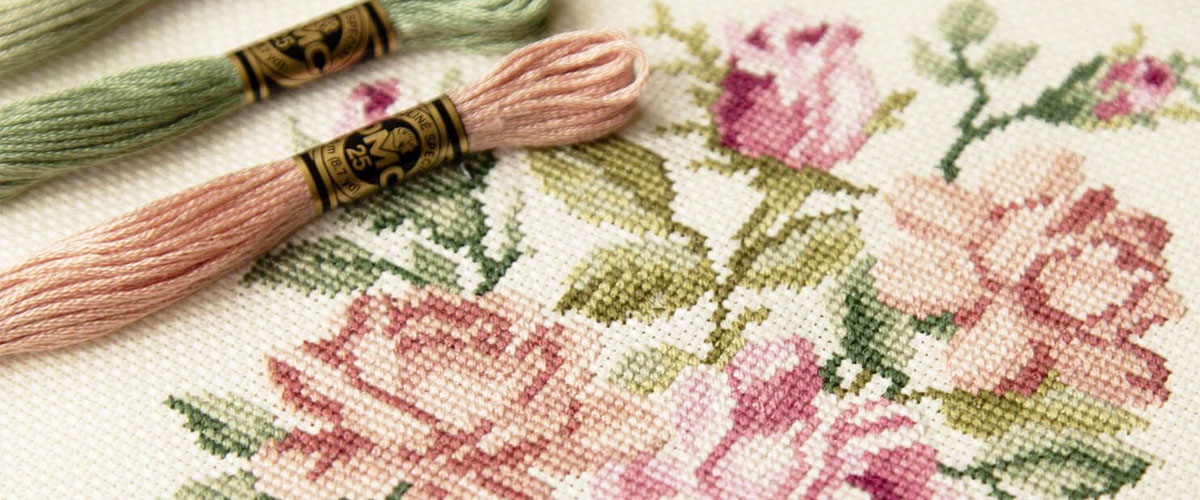
Both embroidery and cross stitch involve distinct processes in their execution, but is cross stitch the same as embroidery? Let’s compare the step-by-step processes for each technique, including approaches for handling intricate details, color blending, and smooth transitions:
Cross stitch:
- Fabric preparation: Secure the Aida cloth on a frame or hoop to maintain tension while stitching.
- Pattern interpretation: Follow a chart or pattern with symbols indicating the color and placement of stitches in cross stitch vs embroidery.
- Stitching technique: Use tapestry needles to create X-shaped stitches, one square at a time, following the pattern’s grid.
- Handling complex details: Incorporate fractional stitches or backstitching to add finer details and outlines.
Embroidery:
- Fabric selection: Choose a suitable fabric based on the design complexity and desired texture in embroidery vs cross stitch.
- Pattern transfer: Transfer the design onto the fabric using a transfer pen, iron-on transfers, or tracing paper.
- Needle and thread selection: Select appropriate embroidery needles and thread types, considering the fabric and stitch style.
- Stitching techniques: Utilize various stitches like satin, stem, chain, and French knots to bring the design to life.
The technique and execution of embroidery versus cross stitch differ in their approach to achieving intricate designs and blending colors. While cross stitch relies on the grid-based nature of Aida cloth, embroidery offers more creative freedom in stitch choices and fabric selection, allowing artists to bring their artistic visions to life.

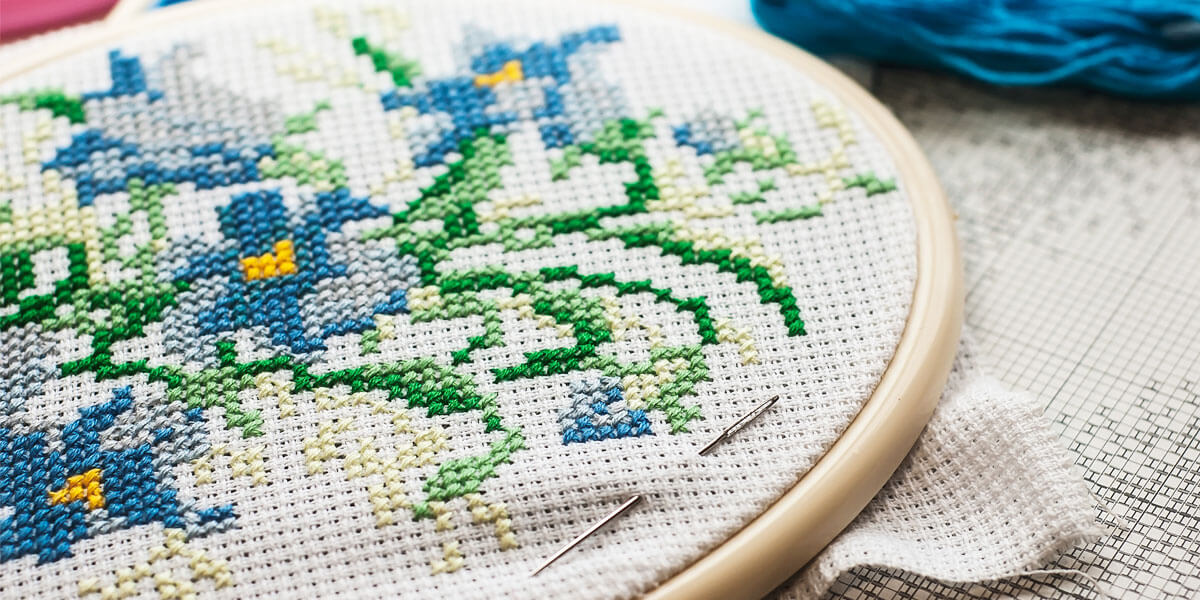
![The 4 Best Machines Under $500 [Budget Sewing Solutions]](https://www.favoritethings.net/wp-content/uploads/2024/03/best-sewing-machine-under-500-review-300x150.jpg)
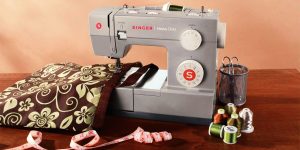
![Best Sewing Machines for Upholstery [Crafting with Quality]](https://www.favoritethings.net/wp-content/uploads/2024/02/best-sewing-machine-for-upholstery-300x150.jpg)
